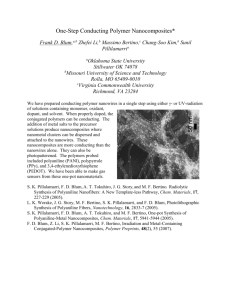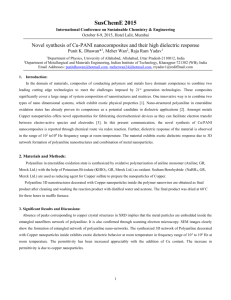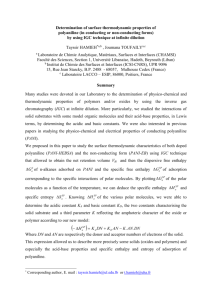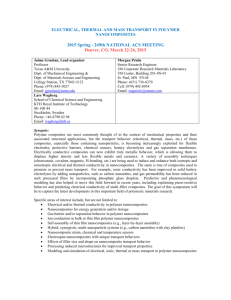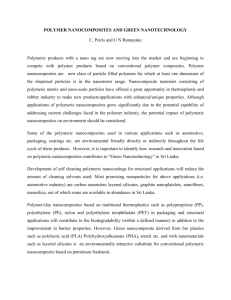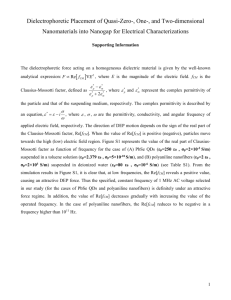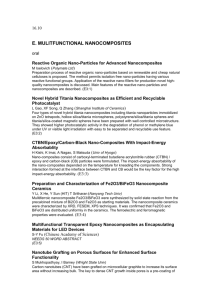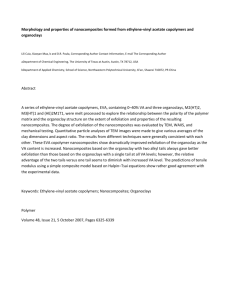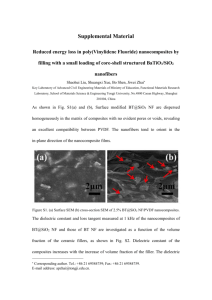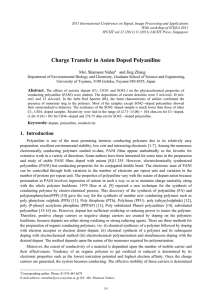Electromagnetic properties of polyaniline/maghemite nanocomposites
advertisement
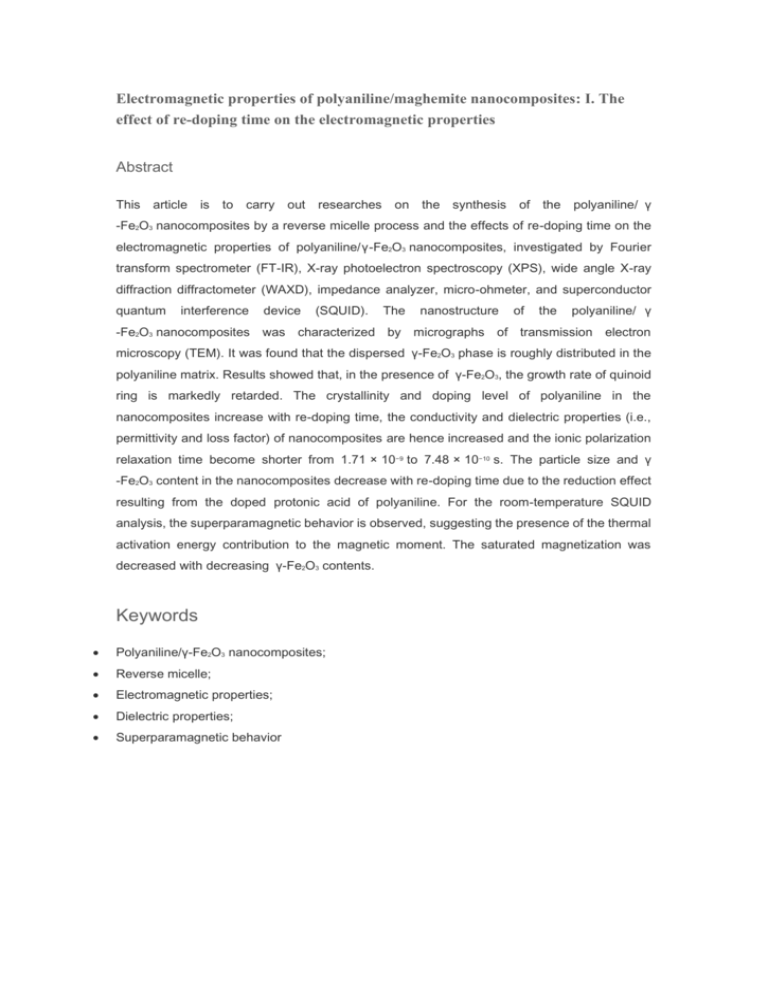
Electromagnetic properties of polyaniline/maghemite nanocomposites: I. The effect of re-doping time on the electromagnetic properties Abstract This article is to carry out researches on the synthesis of the polyaniline/ γ -Fe2O3 nanocomposites by a reverse micelle process and the effects of re-doping time on the electromagnetic properties of polyaniline/γ-Fe2O3 nanocomposites, investigated by Fourier transform spectrometer (FT-IR), X-ray photoelectron spectroscopy (XPS), wide angle X-ray diffraction diffractometer (WAXD), impedance analyzer, micro-ohmeter, and superconductor quantum interference device (SQUID). The nanostructure of the polyaniline/ γ -Fe2O3 nanocomposites was characterized by micrographs of transmission electron microscopy (TEM). It was found that the dispersed γ-Fe2O3 phase is roughly distributed in the polyaniline matrix. Results showed that, in the presence of γ-Fe2O3, the growth rate of quinoid ring is markedly retarded. The crystallinity and doping level of polyaniline in the nanocomposites increase with re-doping time, the conductivity and dielectric properties (i.e., permittivity and loss factor) of nanocomposites are hence increased and the ionic polarization relaxation time become shorter from 1.71 × 10−9 to 7.48 × 10−10 s. The particle size and γ -Fe2O3 content in the nanocomposites decrease with re-doping time due to the reduction effect resulting from the doped protonic acid of polyaniline. For the room-temperature SQUID analysis, the superparamagnetic behavior is observed, suggesting the presence of the thermal activation energy contribution to the magnetic moment. The saturated magnetization was decreased with decreasing γ-Fe2O3 contents. Keywords Polyaniline/γ-Fe2O3 nanocomposites; Reverse micelle; Electromagnetic properties; Dielectric properties; Superparamagnetic behavior
